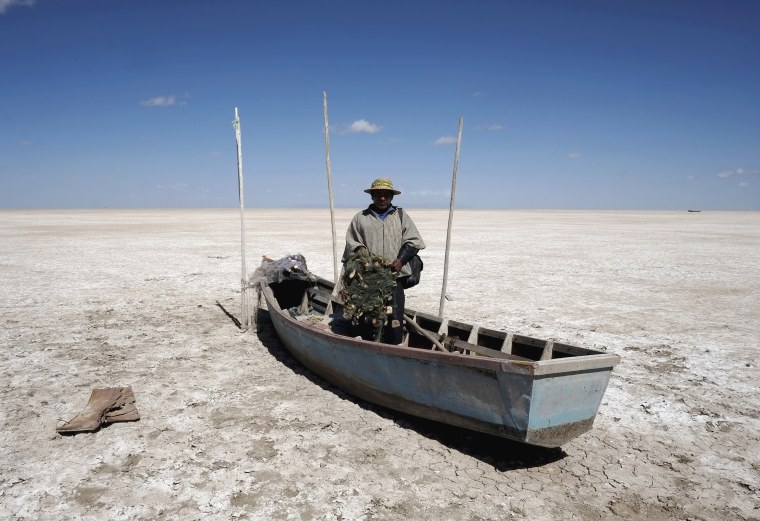UNTAVI, Bolivia -- Overturned fishing skiffs lie abandoned on the shores of what was Bolivia's second-largest lake. Tire tracks mark the mud where hundreds, if not thousands, of people once made their livelihoods.
High on Bolivia's semi-arid Andean plains at 12,000 feet and long subject to climatic whims, Lake Poopo was officially declared evaporated last month. The salt lake has essentially dried up before, only to rebound to twice the area of Los Angeles. But scientists say such recovery may no longer be possible.
"This is a picture of the future of climate change," says Dirk Hoffman, a German glaciologist who studies how rising temperatures from the burning of fossil fuels has accelerated glacial melting in Bolivia.
RELATED: Photos: Bolivia's Second Largest Lake Dries Up Entirely
As Andean glaciers disappear so do the sources of Poopo's water. But other factors are in play in the demise of Bolivia's second-largest body of water behind Lake Titicaca.
Drought caused by the recurrent El Niño meteorological phenomenon is considered the main driver. Authorities say another factor is the diversion of water from Poopo's tributaries, mostly for mining but also for agriculture.
More than 100 families have sold their sheep, llamas and alpaca, set aside their fishing nets and quit the former lakeside village of Untavi over the past three years, draining it of well over half its population. Only the elderly remain.
"There's no future here," said 29-year-old Juvenal Gutierrez, who moved to a nearby town where he ekes by as a motorcycle taxi driver.
Record-keeping on the lake's history only goes back a century, and there is no good tally of the people displaced by its disappearance. At least 3,250 people have received humanitarian aid, the governor's office says.
Poopo is now down to 2 percent of its former water level, regional Gov. Victor Hugo Vasquez calculates. Its maximum depth once reached 16 feet (5 meters). Field biologists say 75 species of birds are gone from the lake.
"Something could have been done to prevent the disaster. Mining companies have been diverting water since 1982," said Angel Fores, the head of the local citizens' group that tried to save Poopo.
In hope of bringing it back, Bolivian President Evo Morales' government has asked the European Union for $140 million for water treatment plants for the Poopo watershed and to dredge tributaries led by the Desaguadero, which flows from Lake Titicaca.
Critics say it may be too late.
"I don't think we'll be seeing the azure mirror of Poopo again," said Milton Perez, a Universidad Tecnica researcher. "I think we've lost it."
Associated Press writer Frank Bajak contributed to this report from Lima, Peru.
